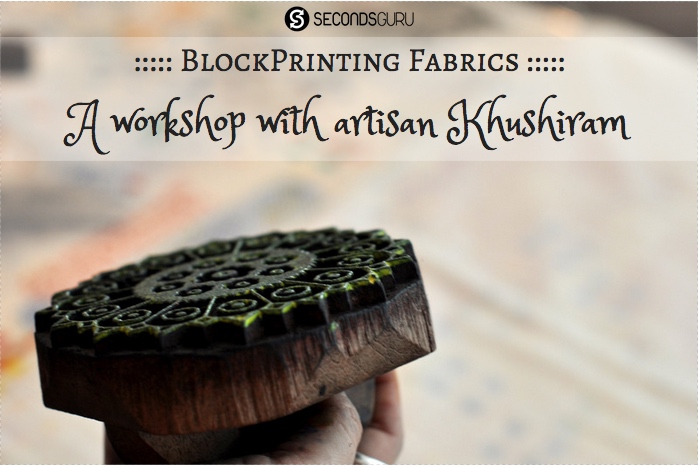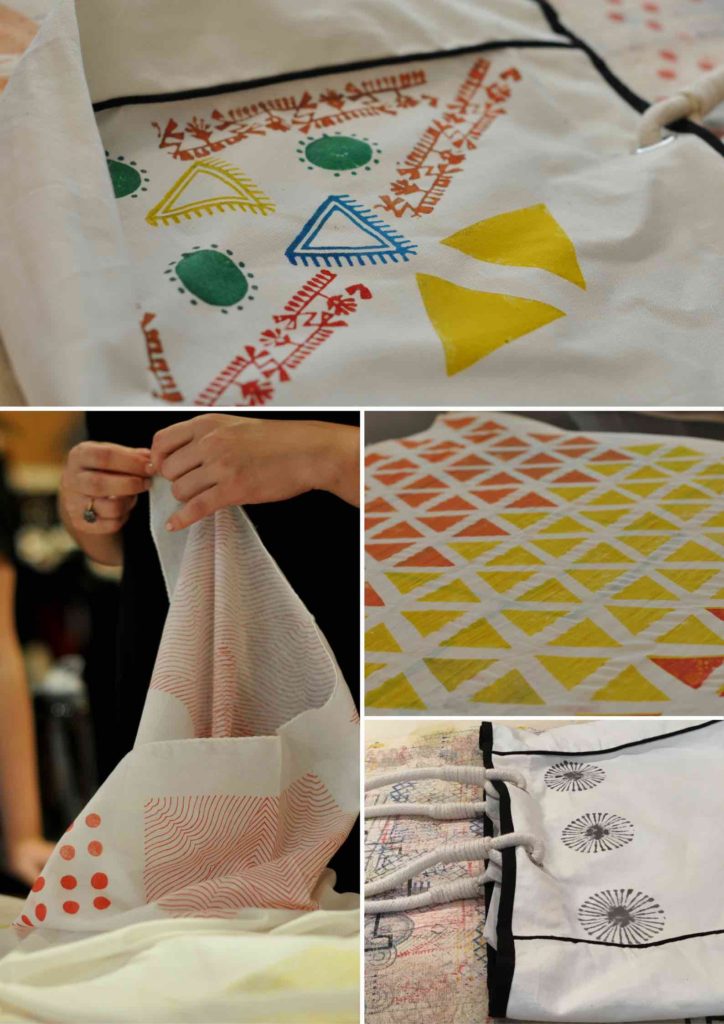Published 8 January 2017 ● Last Updated on 8 January 2017
You have definitely seen and drooled over them: the beautiful, delicate blockprints of Rajasthan. Their shapely forms repeat endlessly, creating geometric beauty in their wake. You can sight them on all sorts of drapes – scarves, stoles, curtains, sheets… Step into the fabric markets of Delhi or Jaipur, and you cannot escape the draw of their prints, their hypnotic patterns.
What amazes me is how the art form of blockprinting, several centuries old, has evolved into the modern age and retains a popular appeal. I love that one can find traditional motifs – say, the mango-shaped bootas, as easily as kitschy versions of autorickshaws and moustaches.
So when we at Secondsguru got a chance to learn and document it from a bonafide craftsman – Khushiram – a fourth generation artisan, we grabbed it whooped for joy! Lara decided to expand her skillset by learning from the maestro, while I sat back to document it.
Here is our short feature on our experience at the workshop. But the idea behind sharing the following pictures and descriptions is not to just convey information; we hope you see the joy of handcrafting, that you feel a connection with the fabric after knowing its story.
The workshop was organised by Matter – a socially motivated clothing brand that seeks to make textile craft sustainable. It works with communities at their locations and supports several handcrafting techniques – blockprinting being one of them. Khushiram, who led the workshop, is their artisan partner based in Rajasthan, India.
The venue was Naiise, an outstanding curator of designs whose roomy branch at Clarke Quay Central is perfect for housing workshops – lots of space, and lots of inspiration!
When we reached the workshop, Khushiram was already fussing around the dyes, mixing and remixing various tints to get the perfect consistency. Tubs of yellow, red, indigo and green lay prepared out of readymade DyStar pigments (available in Singapore). They were then poured onto trays.

*****
Our first decision at the workshop threatened to overwhelm us – such a gorgeous array of blocks to choose from! Firm triangles, delicate dandelions, wavy lines, sunny circles, intricate strips … all participants got busy assessing their potential and shortlisted their favourites for a try out.

These blocks are derived from the wood of Shesham and Sagwan trees as they do not contract or expand with weather changes – thus maintaining the sanctity of design. They are carved/chiselled by hand, then soaked for 2-3 days in mustard oil before use.
*****
If you’ve done rookie blockprinting at home (like us), then this probably an Aha! moment for you too: don’t just dip the block in the paint and stamp. To get a neat print, a thin and even layer of paint is necessary. To achieve it, the paint tray is set up in layers which allows for color filtration. In the picture below, you can see a hierarchy of bamboo frame, wool and several thin cotton cloths. The choice of layers depends on the thickness of patterns on the block. The thinner our patterns, the more layers we use (so only the finest paint that has percolated to the top reaches the block’s surface).

In days past, a woven mesh made of bamboo was used as a base for color filtration, but nowadays, Khushiram informs us, the process has evolved to use materials that are cheaper and more easily available – nylon mesh, topped with jute, then cotton or silk.
*****
We chose our material – scarf or tote bag – and were guided on pinning the cloth to minimise unwanted movement. Since patterns are repeated, an accurate cloning of the imprint at equal intervals has to be achieved. Bunched up material is a strict no-no.

In blockprinting factories, workers move across long tables that go on for several meters. Bales of cloth are pinned on to the cushioned surface, and artists stamp and move on, human conveyor belts leaving patterns as they pass through the aisles. Most designs require the fabric to be stamped a minimum 3000 times, says Khushiram, which surprises Lara as her palm-side is sore and showing signs of an early bruise after working on just one tote!
*****
Initial instructions complete, participants dived into their own art works. Within just an hour or so, the breadth of imagination was visible in the varying styles of artworks. Lara was busy creating a contemporary pattern that still retained an ethnic root. A student near us was repeating triangles in double tones with an architectural sensibility. Another participant had created an autumnal motif with randomly arranged stamps. The versatility of the blockprints, the ease with which it bends to the creator’s will – see for yourself in the picture below!
*****
Price of the workshop: $100
Travel Fare: $20
The fun we had creating our own design: $$$
Showing off our handmade creation to jealous friends: Priceless!
Keep following our calendar or sign up to our newsletter so you stay updated on awesome events like these!







0 Comments